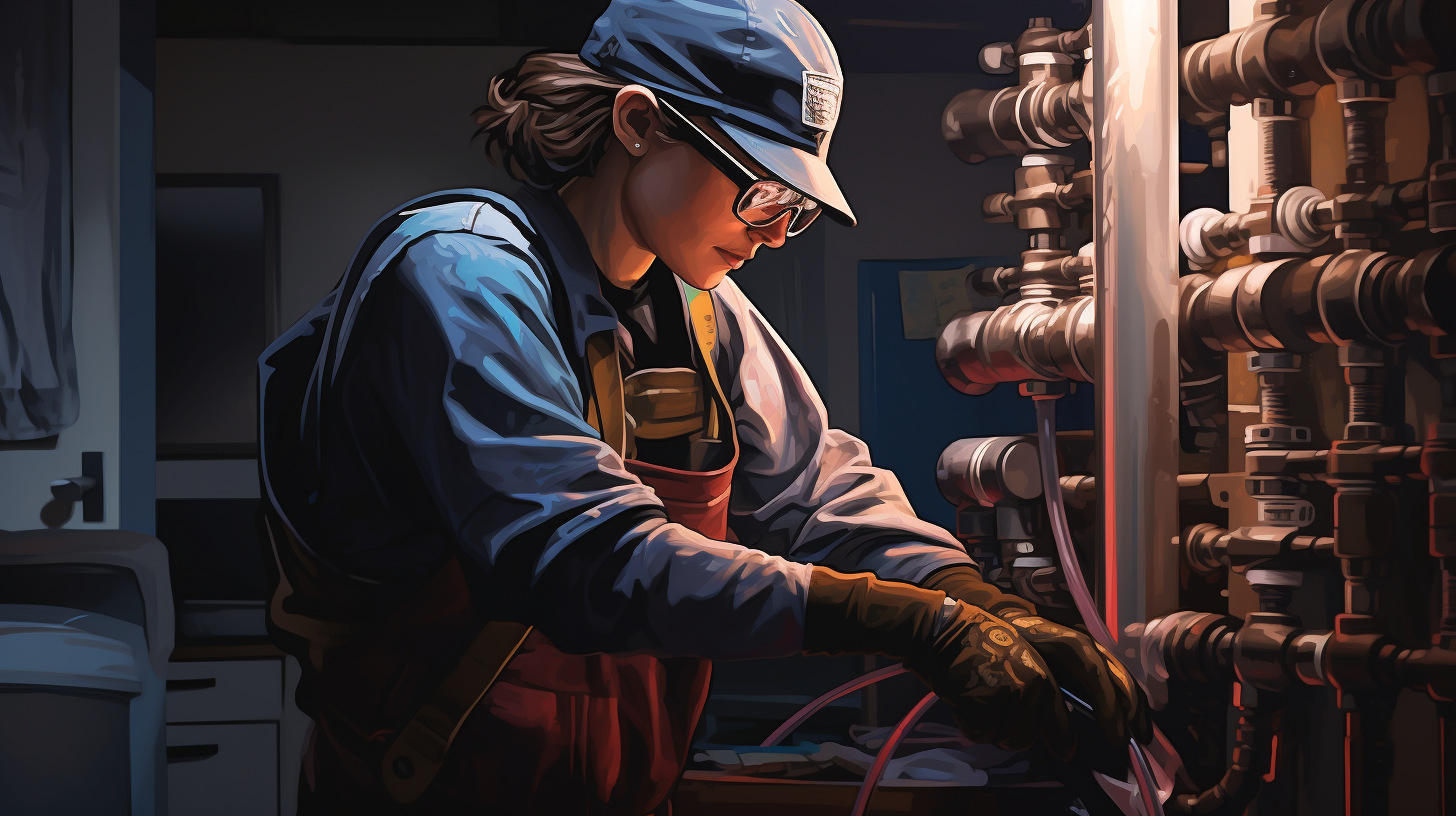We've got some helpful tips for safely repairing your water heater on your own.
In this article, we'll guide you step-by-step through the process, while also pointing out common mistakes to avoid.
With the right tools, precautions, and our expert advice, you'll be able to successfully fix your water heater without any worries.
So let's get started and ensure your hot water keeps flowing smoothly!
Essential Tools for Water Heater Repair
To successfully repair a water heater, we'll need a set of essential tools that are necessary for the job. These tools are crucial in ensuring a safe and efficient repair process.
Firstly, a multimeter is essential for testing electrical connections and troubleshooting any electrical issues. It helps us identify if there's a problem with the heating element or thermostat.
Next, a pipe wrench is necessary for loosening and tightening pipe fittings. It provides a firm grip and allows us to easily remove and install pipes without damaging them.
Additionally, a Teflon tape is indispensable for sealing pipe threads and preventing leaks.
Lastly, a screwdriver set is essential for removing and installing screws and electrical panels.
With these tools on hand, we can confidently tackle any water heater repair task.
Safety Precautions to Follow Before Repairing a Water Heater
Before we begin repairing a water heater, let's prioritize safety by following these essential precautions.
Firstly, it's crucial to turn off the power supply to the water heater. This can be done by switching off the circuit breaker or disconnecting the power source.
Next, shut off the gas supply if your water heater operates on gas. This can be done by turning off the gas valve.
It's also important to let the water heater cool down before attempting any repairs. Hot water can cause severe burns, so give it enough time to cool off completely.
Additionally, make sure to wear protective gear such as gloves and safety goggles to prevent any injuries.
Finally, have a fire extinguisher nearby in case of emergencies.
Step-by-Step Guide for DIY Water Heater Repair
Now that we've prioritized safety and taken necessary precautions, let's delve into the step-by-step guide for DIY water heater repair.
First, turn off the power supply to the water heater by flipping the circuit breaker or shutting off the gas valve.
Next, locate the thermostat and heating element access panels on the water heater. Remove the panels using a screwdriver and set them aside. Inspect the heating elements for signs of damage or corrosion. If necessary, replace them with new ones.
Then, check the thermostat settings and adjust them if needed. If the thermostat is faulty, replace it.
Afterward, drain the water heater to remove any sediment or debris. Attach a hose to the drain valve and direct the water to a suitable drain.
Lastly, refill the tank and turn the power supply back on. Remember to check for any leaks and ensure everything is functioning properly before using the water heater.
Common Mistakes to Avoid During Water Heater Repair
As we continue our discussion on DIY water heater repair, it's important to be aware of common mistakes to avoid during the process. These mistakes can't only lead to further damage to your water heater but also pose safety risks.
One common mistake is neglecting to turn off the power supply before starting any repair work. Failing to do so can result in electrical shocks or even fires.
Another mistake to avoid is using improper tools or techniques. It's crucial to use the right tools and follow the manufacturer's instructions to ensure a safe and effective repair.
Additionally, overlooking the importance of draining the tank before performing any repairs can lead to water leakage and damage.
Additional Safety Tips for Successful Water Heater Repair
What are some important safety considerations for successfully repairing a water heater?
When attempting to repair a water heater, it's crucial to prioritize safety to avoid accidents and injuries. One essential tip is to turn off the power supply to the water heater before starting any repair work. This can be achieved by shutting off the breaker in the electrical panel or turning off the gas valve for gas-powered heaters.
Additionally, it's essential to let the water cool down before attempting any repairs to avoid scalding or burns. Wearing protective gear such as gloves, safety glasses, and long sleeves is also highly recommended to prevent any potential harm.
Lastly, it's crucial to follow manufacturer instructions and guidelines while working on the water heater to ensure a successful and safe repair.
Frequently Asked Questions
How Often Should I Schedule Professional Maintenance for My Water Heater?
We should schedule professional maintenance for our water heater at least once a year.
Regular maintenance helps ensure that our water heater functions properly and efficiently. It allows a professional to inspect and clean the tank, check for any leaks or damage, and make necessary repairs.
By scheduling regular maintenance, we can prevent potential problems and extend the lifespan of our water heater.
It's important to prioritize the safety and performance of our water heater through professional maintenance.
What Are the Signs That Indicate My Water Heater Needs Repair or Replacement?
When it comes to our water heater, it's important to be aware of signs that indicate the need for repair or replacement.
Some common signs include:
- A lack of hot water
- Discolored water
- Strange noises
- Leaks
If you notice any of these signs, it's best to contact a professional to assess the situation. Ignoring these issues can lead to further damage or even safety hazards.
Is It Safe to Repair a Gas Water Heater on My Own?
Yes, it's possible to repair a gas water heater on our own, but it's important to prioritize safety. Gas water heaters can be dangerous if not handled properly, so we should exercise caution and follow proper guidelines.
It's recommended to consult a professional if we're unsure or inexperienced in handling gas appliances. Safety should always be our top priority when attempting any DIY repairs, especially with gas-powered equipment.
Can I Use Any Type of Wrench for Loosening and Tightening Water Heater Connections?
Yes, you can use any type of wrench for loosening and tightening water heater connections. It's important to choose the right size and type of wrench for the job. Using an adjustable wrench or a pipe wrench is usually recommended for these connections.
It's crucial to ensure a secure and leak-free connection. Make sure to apply the necessary amount of force without over-tightening. Always refer to the manufacturer's instructions and exercise caution when working with gas water heaters.
How Can I Prevent Future Water Heater Problems After Completing the Repair?
After completing the water heater repair, there are several steps we can take to prevent future problems.
First, we should regularly inspect the unit for any signs of leaks or damage.
Second, it's important to flush the tank annually to remove sediment buildup.
Third, we can install a pressure relief valve to prevent excessive pressure from damaging the tank.
Lastly, we should maintain the temperature at a reasonable level to avoid excessive strain on the heater.
Conclusion
In conclusion, it's possible to safely repair a water heater on your own with the right tools, precautions, and guidance. By following the step-by-step guide and avoiding common mistakes, you can successfully fix your water heater and ensure its proper functioning.
Remember to prioritize safety at all times and seek professional help if needed. With these tips, you can save money and have a fully functional water heater in no time.



